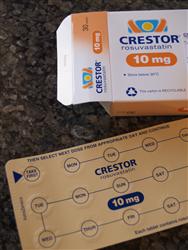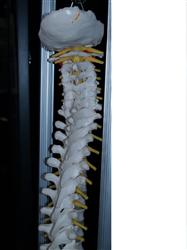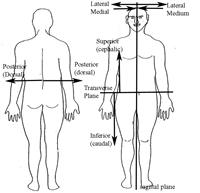Medical Language Training Course - study by distance learning and improve your use of medical terminology for professional development or personal interest
- This course would be useful for anyone working or wishing to work in a medical or health environment such as medical sales or support, natural therapies, doctor's surgeries and medical administration.
- With knowledge and increased awareness of medical terms, students are able to progress with ease into other courses in science and human health.

Would you like to work in Medical Support or Administration?
The first step toward a work in medical administration is to learn to speak and write medical language. Graduates from this course may go on to work in any of the following situations:
-
Secretary Receptionist duties for a doctor or allied health professional
-
Ward Clerk in a hospital
-
Medical Insurance Officer
-
Marketing officer for a medical supply company
-
Speakers of English as a second language who work in this area e.g. nurses
There is a logical system to the way most medical terms are constructed. If you can learn to understand the system, you will have a foundation that will enable you to de-construct and understand the meanings of both familiar, and unfamiliar medical words.
This is a more extensive course than some other medical terminology courses, but the duration of 100 hours is considered necessary to gain a comprehensive understanding of the subject, and to get to a point where deciphering medical words becomes "second nature" and is a skill that will remain embedded in your subconscious.
Course Structure and Lesson Content
The course is divided into 10 lessons as follows:
1. Scope and Nature of Medical Terminology
2. Anatomical Structure

3. Medical Equipment and Procedures Terminology
-
Terms to describe Diagnostic and Surgical Procedures
-
Terms to describe Medical Equipment
-
Storage and Handling of Medicines
-
Sterilising Equipment
-
Terms to describe Bacteria
-
Gram Staining
-
Diagnostic Microbiology
-
Research Microbiology
-
Types of Wounds
-
Problems Resulting from Wounds
-
Treating Wounds
-
Electrolytes
-
Examples of Prefixes and Suffixes
4. Pharmacological Terminology
-
Types of herbal and pharmaceutical medicines (e.g. Alkaloids, Calmatives, Cathartics, Decongestants, Expectorants, etc.)
-
Pharmacological Terms (e.g. Allergens, Carcinogens, Photosensitisers, Toxic Alkaloids, etc)
-
Over the Counter Prescription Drugs
-
Terminology for OTC and Prescription Drugs (e.g. Steroids, Barbiturates, anti-Psychotic Drugs etc.)
-
Prefix and suffix examples
5. Musculoskeletal System Terminology
-
 Naming main muscles
Naming main muscles
-
Musculature –Types of Muscle tissue
-
Relationship between muscles and bone
-
Bone and Joint problems (e.g. Sprains, Broken Bones, etc)
-
Disorders of musculoskeletal System (e.g. Fibromyalgia, Sprains, strains, Cramp, etc.)
-
Suffix Examples
6. Cardiovascular, Lymphatic and Immune Systems Terminology
-
Parts of the Heart
-
Circulation
-
Systole and Diastole
-
Terms related to Disorders of Cardiovascular System
-
Lymphatic System and Immunity
-
Leucocytes
-
Vaccination
-
Immunity
-
Disorders of Immunity
-
Suffix and Prefix Examples
7. Respiratory and Reproductive Systems Terminology
-
Lungs
-
Respiration
-
Pulmonary Circulation
-
Gas Exchange (Diffusion, Perfusion, Arterial Pressure)
-
Carbon Monoxide Poisoning
-
Diagnostic Procedures for Lungs and Airways
-
Respiratory Disorders
-
Male Reproductive System.
-
Female Reproductive System
-
Pregnancy
-
Parturition
-
Caesarean Section, VBAC and Multiple Gestation
-
Premature Birth and Miscarriage
-
Reproductive Disorders (e.g. Amenorrhoea, Menorrhagia, PCOS, Endometriosis, etc.)
-
Suffix and Prefix Examples
8. Digestive and Excretory Systems Terminology
-
Parts of the Digestive System
-
Renal System
-
Kidneys
-
Ureters and Bladder
-
Urethra
-
Disorders of Digestive and Renal Systems (e.g. Anal Fissure, Haemorrhoids, Inflammatory Bowel System, Kidney Stones, Pancreatitis, etc.)
-
Suffix and Prefix Examples
9. Integumentary System (Skin) Terminology
-
Thermoregulation
-
Electrolytes
-
Types of Sensory Nerves
-
Sun Protection
-
Intergument Structure
-
Cell Types
-
Disorders (e.g. Scab, Atrophic skin, Abrasion, Excoriation, Scar, Ulcer, etc.)
-
Diagnostic Procedures
-
Suffix and Prefix Examples
10. Nervous and Sensory Systems Terminology
-
Brain
-
Central Nervous System
-
Peripheral Nervous System
-
Disorders of Nervous System
-
Disorders of Sensory System (eg. Aphasia, Apraxia, Vertigo, etc)
-
Diagnostic Procedures
-
Suffix and Prefix Examples
Course Aims
-
Communicate clearly and effectively using medical terminology.
-
Explain the scope and nature of terminology used in medicine and allied professions.
-
Identify the meaning of words that describe general anatomical features, including disorders.
-
Identify the meaning of words which describe medical tools, equipment and procedures.
-
Identify the meaning of words that describe pharmacological terms.
-
Identify the meaning of words that describe physiological and anatomical features in the musculoskeletal system, including disorders.
-
To identify the meaning of words that describe physiological and anatomical features in the respiratory and reproductive systems, including disorders.
-
To identify the meaning of words that describe physiological and anatomical features in the digestive and excretory systems, including disorders.
-
Identify the meaning of words that describe physiological and anatomical features in the nervous and sensory systems, including disorders.
Course Duration: 100 hours.
Origins of Medical Words
There are two types of medical terms:
1. Eponyms: Words that are created by naming something after a person or after something else e.g. a disease named after the person who discovered it.
2. Systematically Constructed Words: Medical terms created systematically using other words, or parts of (or derivations from) other words, typically Ancient Greek words or Latin words.
There has been a trend starting over the late 20th century, to replace eponyms with systematically constructed words e.g. Parkinson’s Disease has been renamed “paralysis agitans.”
The advantage of a systematically constructed word is that the components of the word can tell us something about the meaning of the term.
By developing an understanding of the components that are commonly used in these systematically constructed words it is (in time) easier to both understand and remember the meanings of the terminology.
Structure of words
There are three parts to most medical terms:
1. The Word Root - This is usually the middle of the word and provides its core meaning.
2. The Prefix - This is normally at the start and commonly identifies a part of the core meaning.
3. The Suffix - This comes at the end and modifies the core meaning (eg. What it is interacting with or what is happening to it).
Example: The word myocarditis (inflammation of the heart muscle) is constructed systematically from the following:
By changing the prefix only, a new word (pericarditis) can be created.
Peri- means ‘the outer layer’, so Pericarditis is a condition where the outer layer of the heart is inflamed.
Why Study This Course?
Anyone who wants to work in a health or medical environment will need to be able to communicate with colleagues, understanding and using the terminology which they use.
Some people enrol in this course because they find themselves working in the health industries, and struggling to understand their colleagues. Others undertake the course before seeking work, in preparation for employment in this industry.
Medical or Health Care Receptionist
A medical or health care receptionist is on the front desk of a medical or health centre. They are the first person a client will see when they arrive at the clinic, or speak to if they call the clinic. A medical or health care receptionist may work by themselves or in a team, and do some, or all of the following:
-
Answer client’s preliminary questions.
-
Arrange appointments.
-
Organise schedules.
-
Liaise between medical professionals and patients.
-
Answer phones.
-
Organise and file patient records.
-
Taking payment.
-
Process mail and emails.
-
Explain procedures and complete client forms.
-
Ensuring stock levels are maintained.
Opportunities
A medical or health care receptionist may be employed by doctors, osteopaths, physiotherapists, psychologists, naturopaths, acupuncturists, chiropractors, hospitals, radiologists, elderly care facilities, and other health care facilities.
As long as there are health care professionals, there will be a need for medical and health care receptionists. With the ageing population there is an increase in the number of health and medical facilities opening up, and therefore there is an increase in the number of jobs available for receptionists.
Many practices will operate only in business hours, however some may also be open in evenings and weekends.
Medical and health care receptionists may advance their career into clinic management, medical assistant, and (through additional study) nurse positions.
Risks and challenges
In a busy clinic a health and medical receptionist may find the environment stressful at times.
The receptionist will be constantly exposed to sick people, so will need to take care with hygiene, and make sure they have a strong immune system to avoid contracting illnesses.
The receptionist will often be dealing with people who are feeling unwell, and may be rude or emotional to deal with at times. The receptionist will need to be caring and patient when dealing with people in these situations.
How to become a Medical and Health Care Receptionist
The main skills necessary for a medical and health care receptionist are office skills. These can be developed through experience, as well as through education. There are many vocational education courses that may be appropriate.
A knowledge of health sciences and medical terminology will also be advantageous to aid with comprehension and communication within the clinic. Again there are a number of vocational short courses that will provide this knowledge.
First aid and CPR training will be useful and may be essential.
You will need to develop an attitude of empathetic caring, whilst remaining calm in stressful situations.
Other related jobs:
Enrol Today
You can start studying at any time; why not enrol today?
If you have any questions or want to know, please get in touch with us by -
Phone (International) +61 7 5562 1088, or (in Australia) 07 5562 1088, or
Email us at admin@acs.edu.au, or use our FREE COURSE COUNSELLING SERVICE.